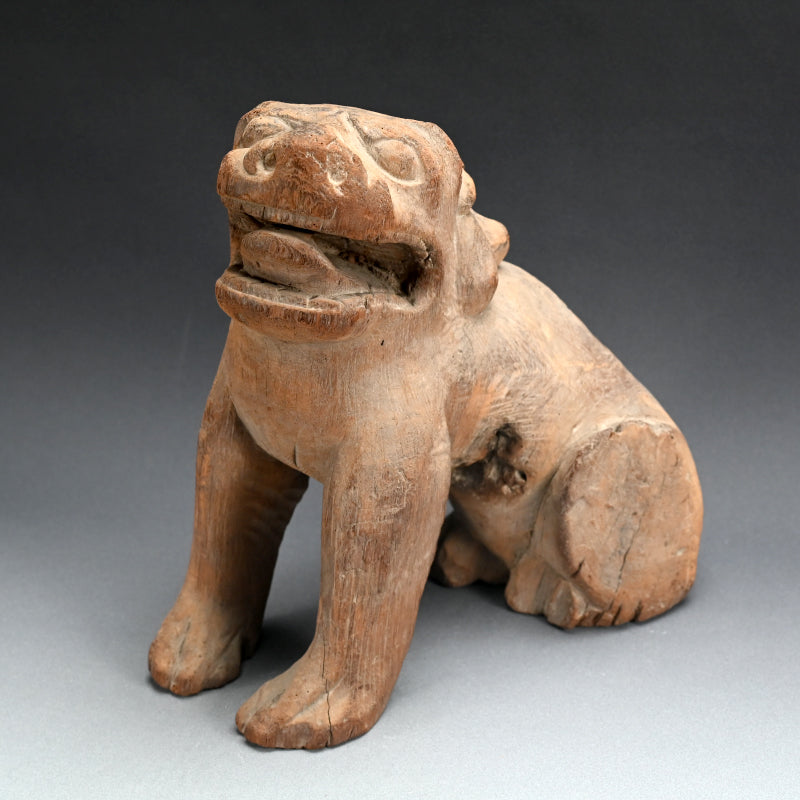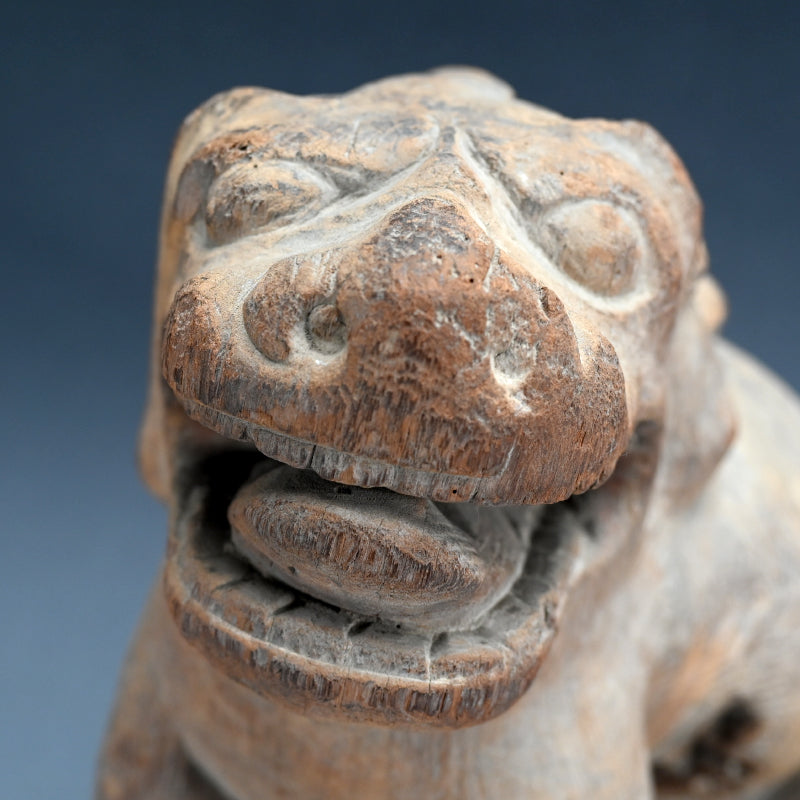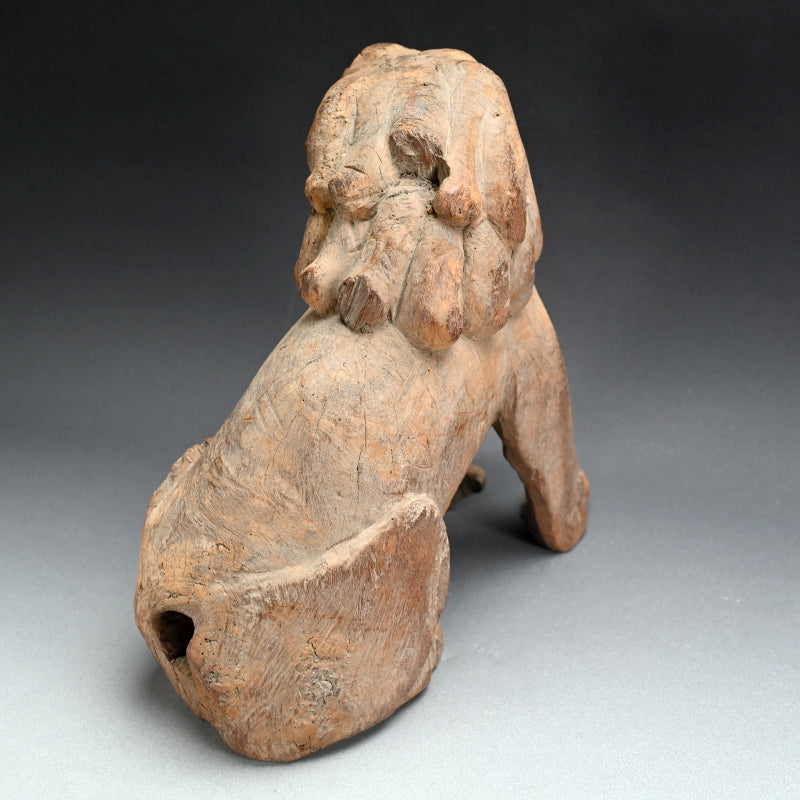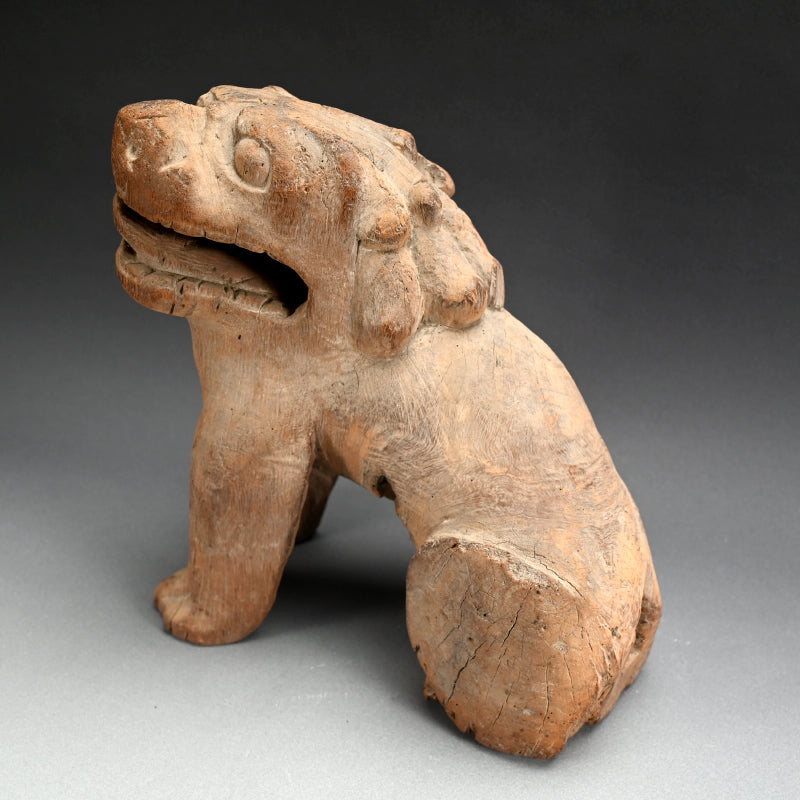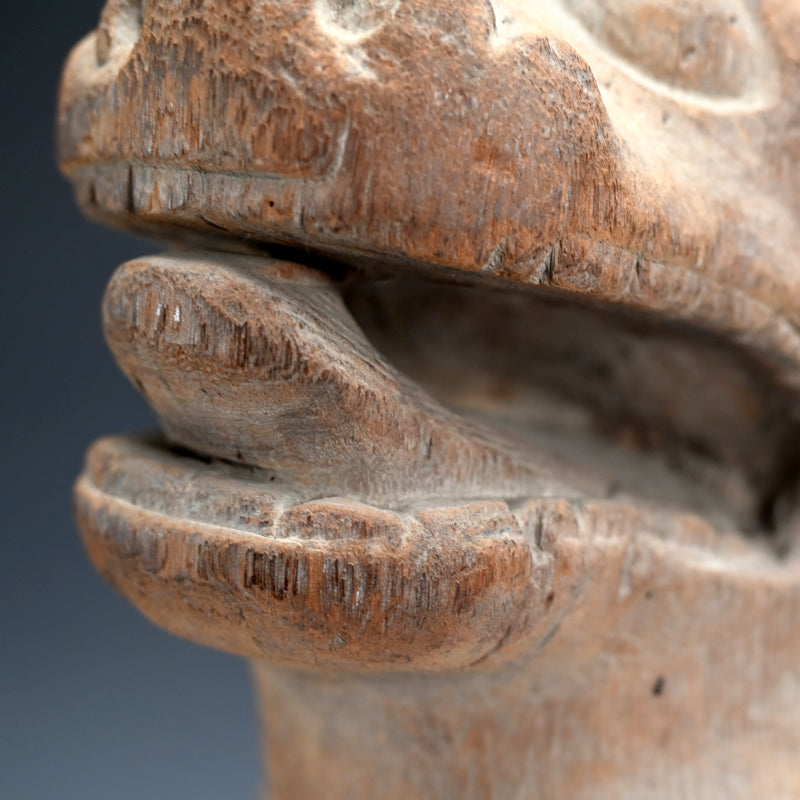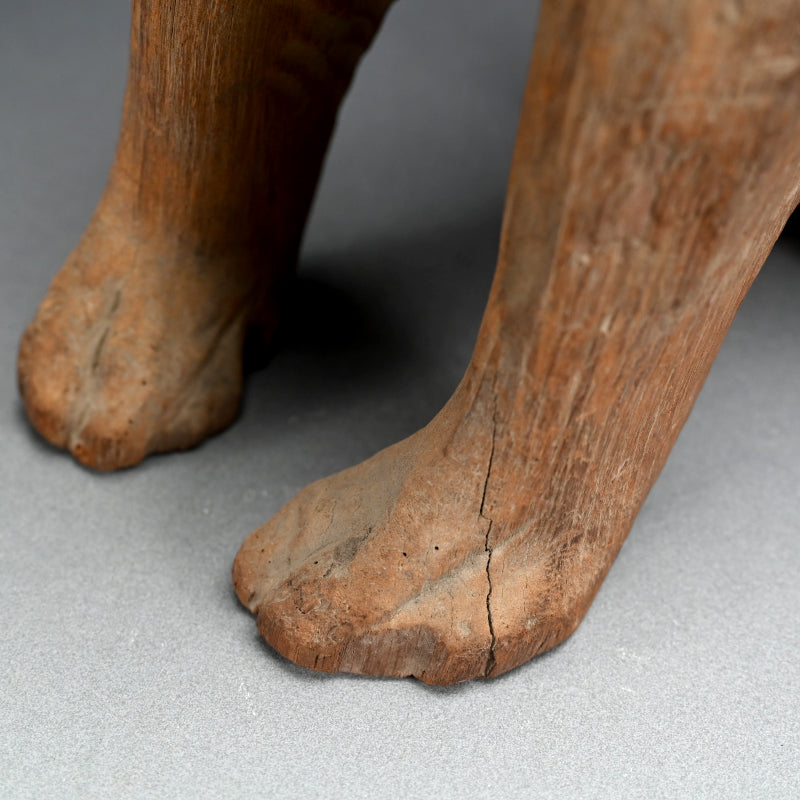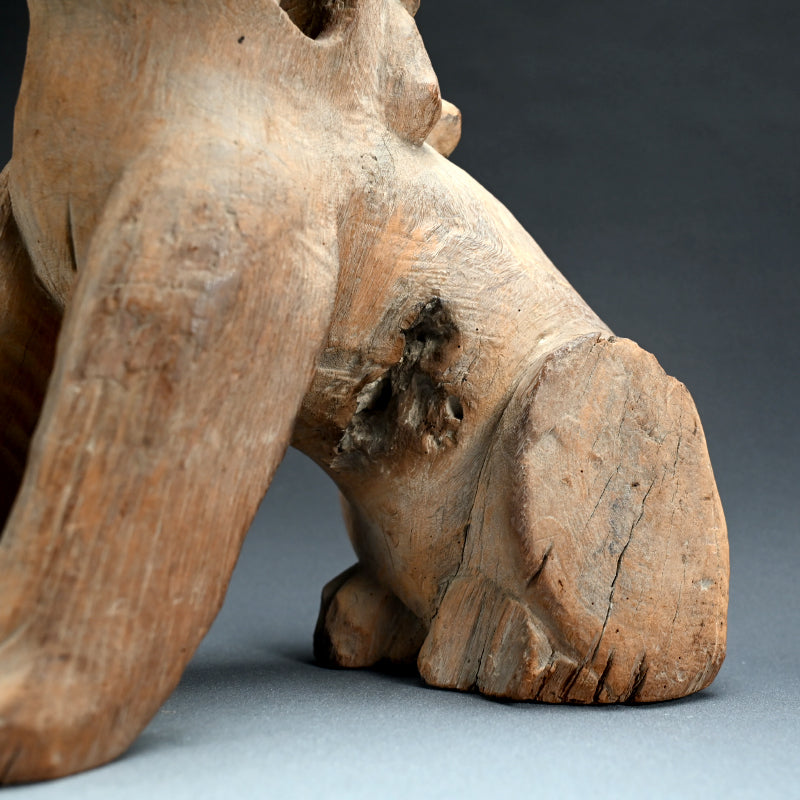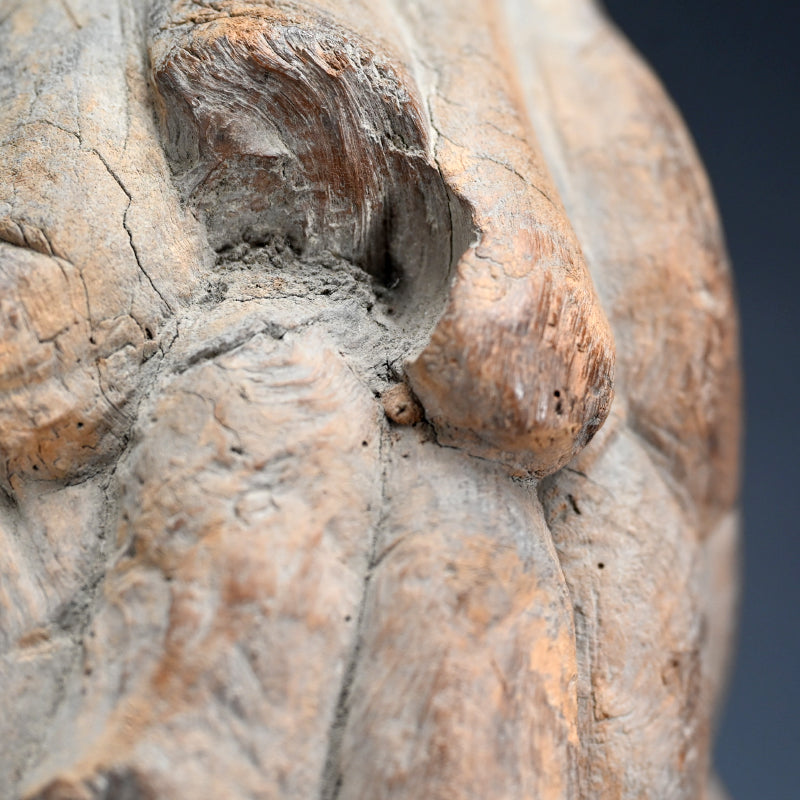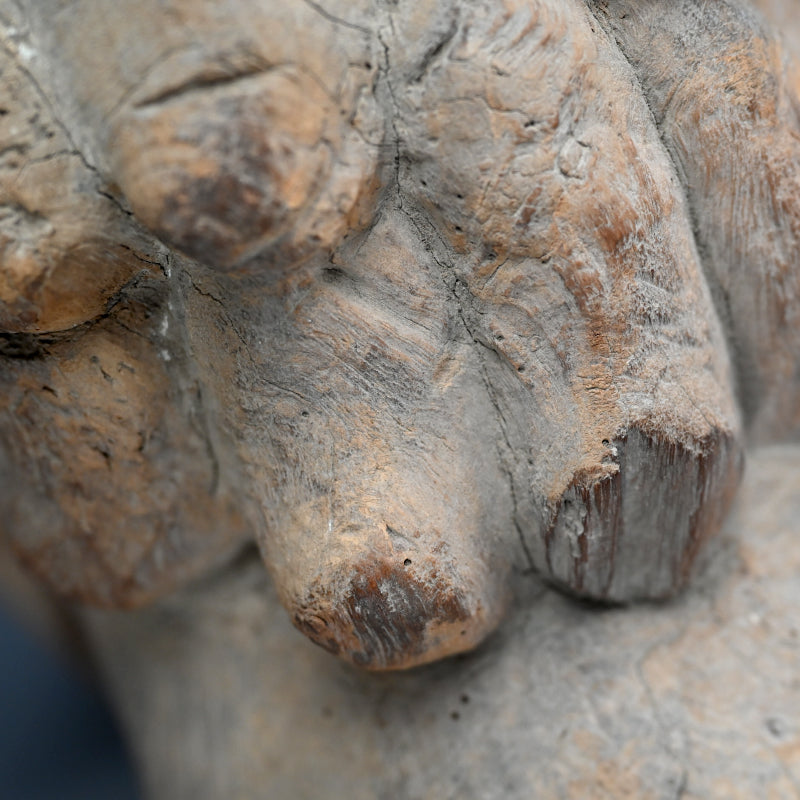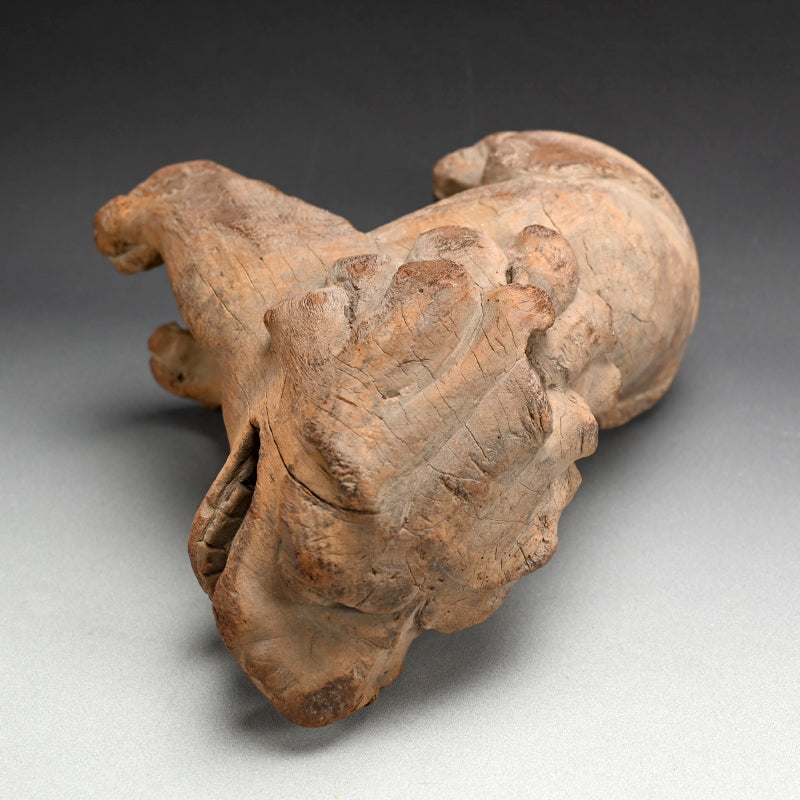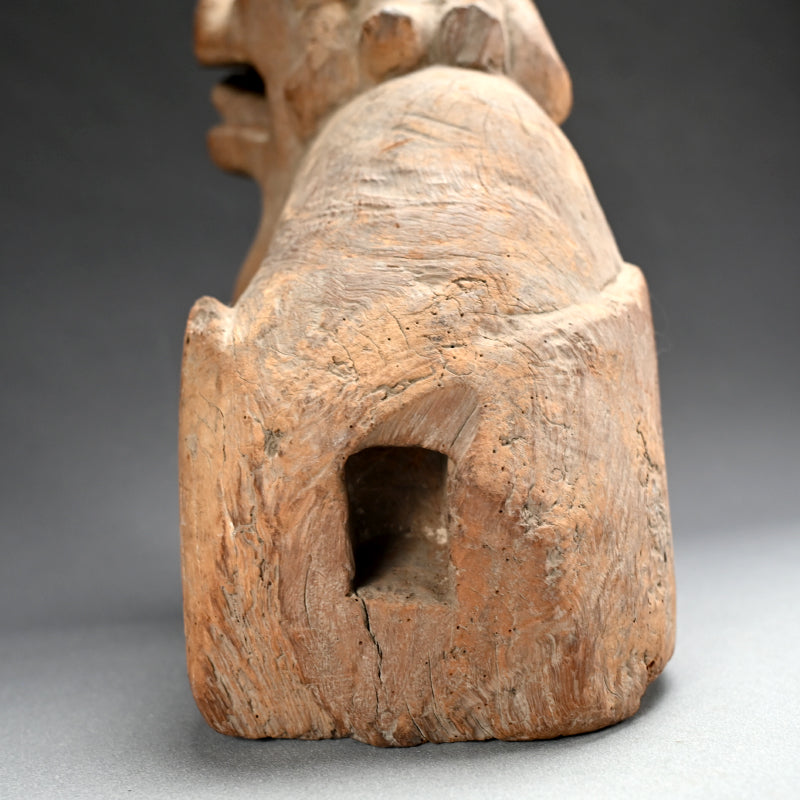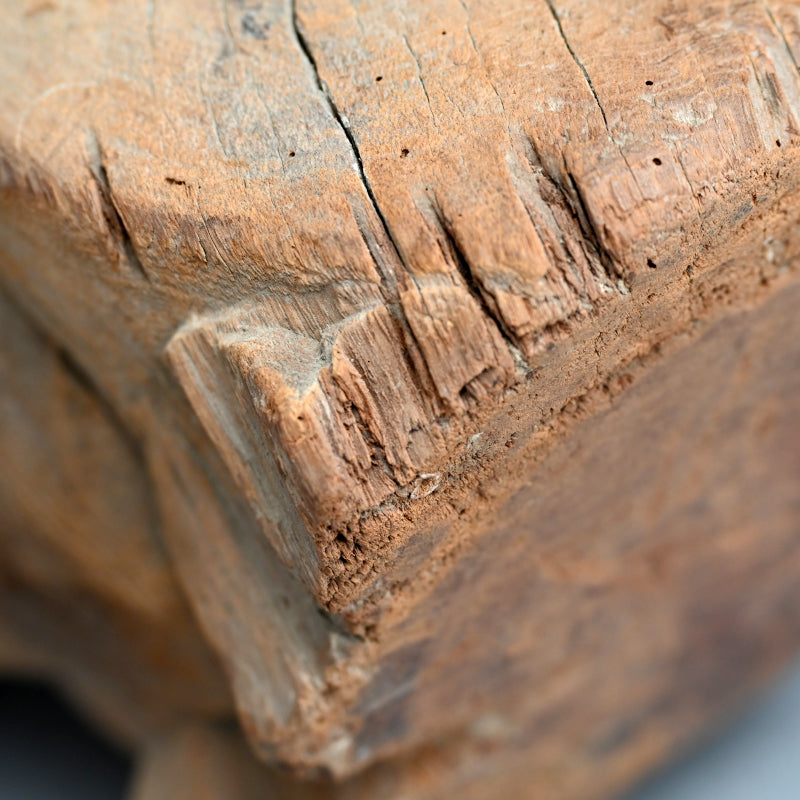Momoyama to Early Edo Carved Wood Koma-inu Guardian
Momoyama to Early Edo Carved Wood Koma-inu Guardian
Item Code: K153
受取状況を読み込めませんでした
A carved wood guardian figure of a Koma-inu looking quite genki with his tongue lolling and wearing a sheepish grin. It is made from a piece of wood which has grown around a stone, visible in the belly of the creature. This type of item, called Ishikui or Ishigami, is a highly prized phenomenon in Japan. The much-weathered figure was likely in the semi-outdoors for several hundred years, becoming rounded and loosing bits here and there. The tail, carved from a separate piece of wood and inserted, is no longer extant. It is roughly 40 x 20 x 41 cm (16 x 8 x 16 inches) and solid, with no insect damage.
Komainu, also known as lion-dogs, are mythical creatures that hold significant religious importance in Japanese culture. They are often depicted as pairs of fierce-looking creatures resembling lions or dogs, with one open-mouthed and the other closed-mouthed. These statues are commonly found at the entrances of Shinto shrines and Buddhist temples in Japan. Komainu are considered protective guardians that ward off evil spirits and negative influences. The open-mouthed Komainu is believed to expel evil spirits, while the closed-mouthed one is thought to keep good spirits inside. By placing these statues at the entrances of sacred sites, it is believed that they protect the grounds and the people who visit them. The origin of Komainu can be traced back to ancient China, where similar guardian lion statues were prevalent and likely came to Japan during the 8th century, when cultural exchange between Japan and the continent was thriving. Over time, they became an integral part of Japanese religious and architectural practices.
Share
